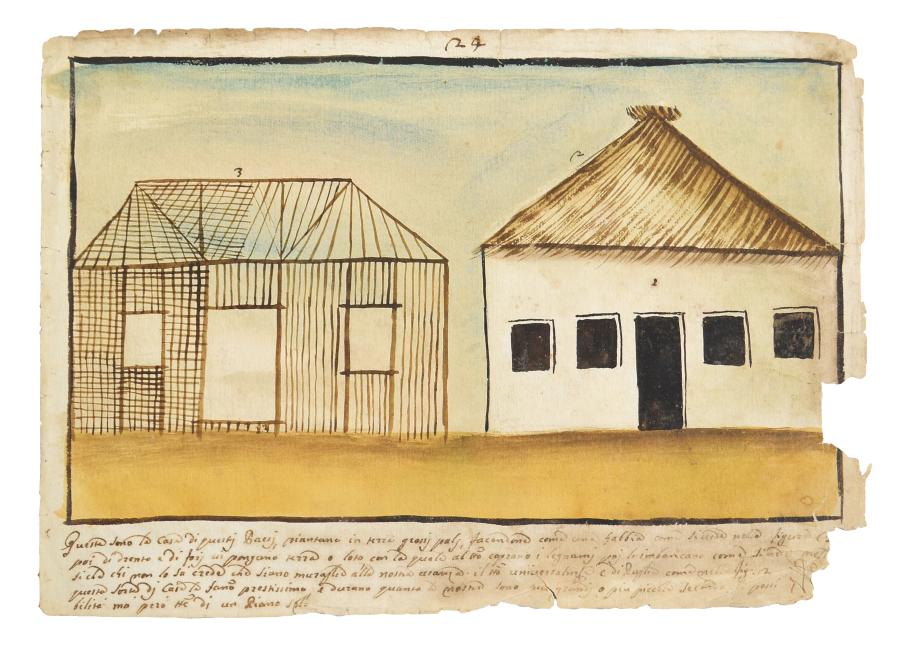PW024: Houses of these countries
Queste sono le case di questi Paesi, piantano in terra grossi pali, facendone come una gabbia come si vede nella figura 3 [. . .] poi di dentro e di fori vi pongano terra o loto can la quale al t[u]tto coprano i legnami poi l’imb[i]ancano come si vede nell[a figura 2] Si che chi non lo sá crede che siano muraglie alle nostra usanza. Il t[e]tto universalmte è di Paglia come nella figura 2. questa sorte di case le fan[n]o prestissimo, e durano quanto le nostre sono piu grandi o piu piccole seconddo le possibilità ma però t[u]tte di un piano solo
These are the houses of these countries; they plant in the ground thick posts, forming with them a cage as can be seen in the figure 3 [. . .] then inside and outside they put earth or mud with which they cover all the timber then they whitewash it as can be seen in [figure 2] so that who doesn’t know believes that they are walls in our manner. The roof is always of straw as can be seen in figure 2. They build this type of houses very rapidly and they last as long as ours, they are larger or smaller according to means but all have one level only

Add new comment